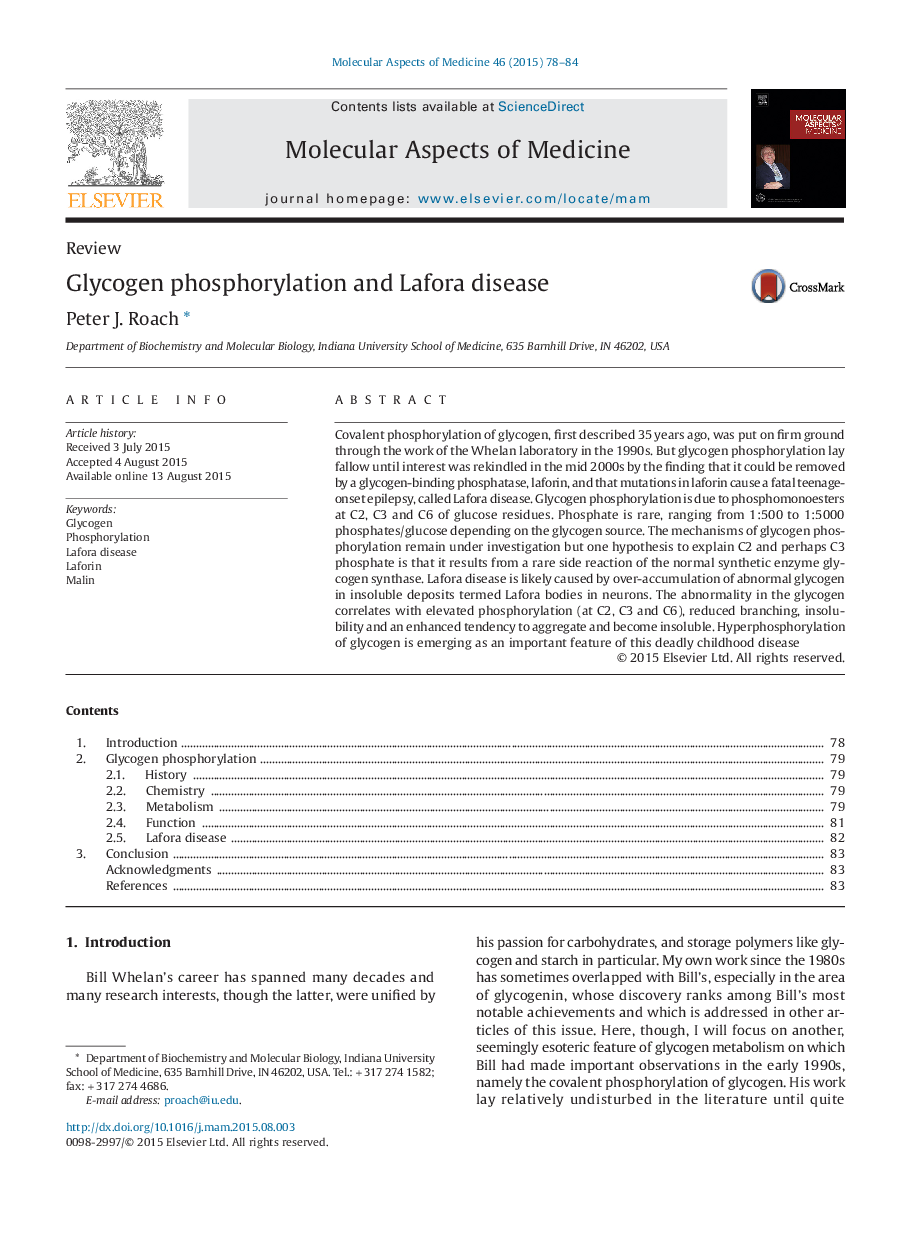| Article ID | Journal | Published Year | Pages | File Type |
|---|---|---|---|---|
| 1995596 | Molecular Aspects of Medicine | 2015 | 7 Pages |
Covalent phosphorylation of glycogen, first described 35 years ago, was put on firm ground through the work of the Whelan laboratory in the 1990s. But glycogen phosphorylation lay fallow until interest was rekindled in the mid 2000s by the finding that it could be removed by a glycogen-binding phosphatase, laforin, and that mutations in laforin cause a fatal teenage-onset epilepsy, called Lafora disease. Glycogen phosphorylation is due to phosphomonoesters at C2, C3 and C6 of glucose residues. Phosphate is rare, ranging from 1:500 to 1:5000 phosphates/glucose depending on the glycogen source. The mechanisms of glycogen phosphorylation remain under investigation but one hypothesis to explain C2 and perhaps C3 phosphate is that it results from a rare side reaction of the normal synthetic enzyme glycogen synthase. Lafora disease is likely caused by over-accumulation of abnormal glycogen in insoluble deposits termed Lafora bodies in neurons. The abnormality in the glycogen correlates with elevated phosphorylation (at C2, C3 and C6), reduced branching, insolubility and an enhanced tendency to aggregate and become insoluble. Hyperphosphorylation of glycogen is emerging as an important feature of this deadly childhood disease
